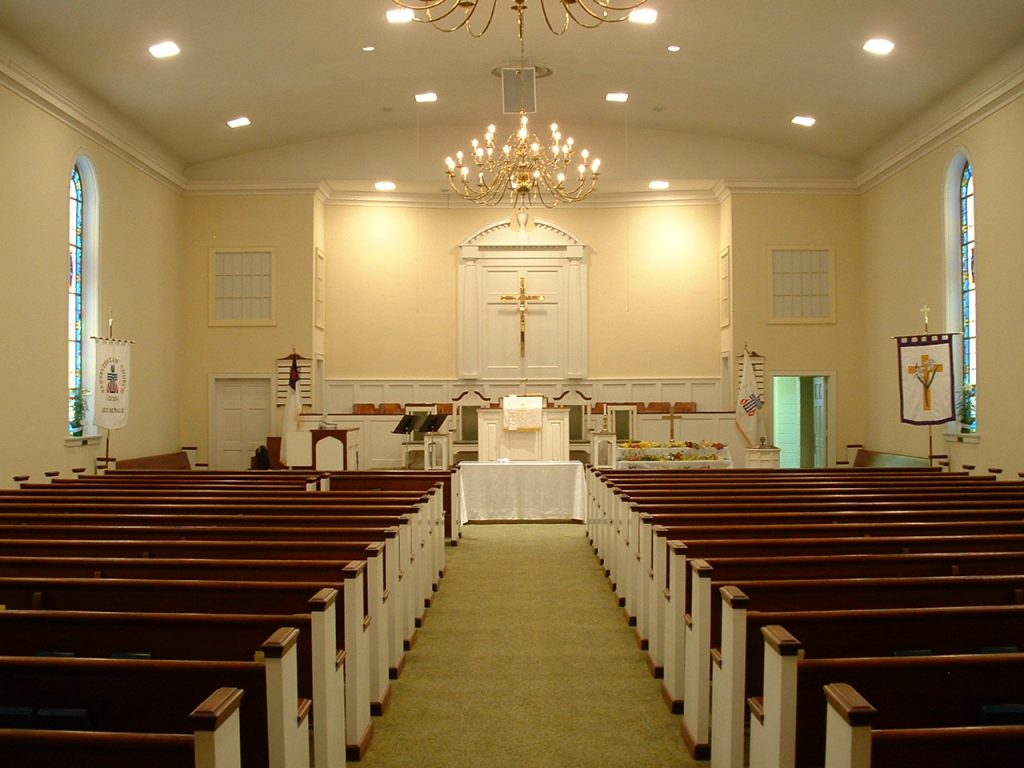Innovative church planting is not something to attempt alone. We need the theological and structural wisdom of those who have gone before us. One source of this wisdom for pioneers comes in the form of church planting models. As J.D Payne points out, “Models are God-given guides to assist us in our church-planting endeavors.”
For a good while, I was a pioneer without a guide. It was like being an out-of-state fly fisherman on an unfamiliar stream: you might catch a few, but not as many as you would with an experienced guide.
Struggling to Find Our Model
King Street Church was born when my senior pastor asked me, the part-time missions director and youngest staff person, to plant a new campus of our 1500 member United Methodist Church. We began with five people who were interested in church, but not involved in a church. Quickly our group of five turned into fifteen.
As we formed, it became clear that we would not be a typical church, at least, not typical of our denomination. Our folks had a desire to maintain the intimacy of smallness, so we began a network of small worship gatherings. I knew something powerful was happening, but I didn’t have the theology to back it. I knew I needed a church planting model to lean on, but finding one that fit was harder than I expected.
One model I found was the house church model. The different brands and variations of house churches offered some valuable insights into the practical aspects of starting new forms of church. However, all of the house church approaches I found had major conflicts with my denominational ecclesiology.
I found similar problems when I looked at other innovative models. Nearly all of them seemed to dismiss denominations like mine for being needlessly restrictive and holding back innovation.
Nearly all #churchplanting models dismissed denominations like mine for holding back innovation.
Tweet this.
Some of these resources even went as far as dismissing the majority of church history. They argued that the period from 300 A.D. to the founding of their particular movement was a misguided “derailment” of organized religion.
What I Love About Our Tradition
While I admire these models for their innovation and ability to create Christian community among the unchurched, I also love my tradition, the United Methodist Church.
There is beauty and value to our traditional forms. We benefit from being connected, both organizationally and by our common theology. Our structures keep both churches and clergy accountable to something beyond themselves. I had seen the beauty of traditional forms of church. I was called and nurtured in the traditional church. How could I start a church based on a model that dismissed the things that I cherished?
I didn’t want to start a church out of opposition to the traditional church. I wanted to form a church with those the traditional church could never reach. I was stuck somewhere between innovation and tradition, feeling quite alone.
I didn’t want to start a church out of opposition to the traditional church.
Tweet this.
The Fresh Expressions Alternative
That was when I heard about Fresh Expressions. And it was love at first sight!
Finally, a model with roots in other historical church traditions that had learned to embrace “traditioned innovation”. The movement had processes that had proven effective. It had heavyweight theologians like the Archbishop Rowan Williams as well as Graham Cray, and Michael Moynagh. They had already spent years wrestling with the implications of new forms of church for established denominations like the Church of England and the British Methodists.
The fruit of their work, the Fresh Expressions movement, was already responsible for thousands of new churches in the U.K. The Holy Spirit was moving through established denominations, not in spite of them. Finally, I had found our model!
How Fresh Expressions Engages Denominations
Fresh Expressions is a movement of Christians from a variety of denominations and traditions that are starting new or different forms of church geared towards those outside the church. They go beyond affirming the value of traditional church, to what they call the “Mixed Economy.” This model says that the traditional church is a perfect launching pad for new forms of church. Instead of dismissing or threatening tradition, fresh expressions of church actually give a renewed sense of purpose to the traditions we love.
A perfect example of the traditioned innovation of Fresh Expressions is found in the Anglican origins of the term “fresh expression.” The Ordination vows in the Church of England state, “The Church of England… professes the faith uniquely revealed in the Holy Scriptures and set forth in the catholic creeds, which faith the church is called upon to proclaim afresh in each generation.” In the midst of Holy Scripture and ancient creeds, innovation rises.
In the midst of Holy Scripture and ancient creeds, innovation rises.
Tweet this.
My friends at King Street Church are fascinated by the traditions and wisdom of the historic church; I’ll even quote the United Methodist Book of Discipline on occasion. It’s not church tradition that has kept my friends from established churches, it’s the restricting structure of the modern church that has held them back.
The traditional church, while altogether beautiful in design, is a difficult place to enter the faith. My friends need a place to wrestle with scripture, to test the faith, and to experience the deep bonds of Christian community for the first time. Few will find that in a crowded sanctuary; many are finding it in Fresh Expressions of church at pubs, parks, and other places where they are already gathering.
Beyond Renovating Sanctuaries
Traditional denominations have been renovating empty sanctuaries long enough. We desperately need to shift focus from maintenance to mission!
This is where Fresh Expressions comes in. Fresh Expressions gives churches and clergy a license to innovate while upholding the value of the traditional church. The traditional sending church thrives as they participate in mission through planting new forms of church. They are relatively easy to start, take only a few volunteers to lead, and cost next to nothing to run.
The Fresh Expressions movement has exploded in the UK with over 3,000 fresh expressions started in nearly every denomination. The movement has begun to take root in the United States in Baptist, Presbyterian, Episcopalian, Anglican, Methodist and so many other circles. The Baptist General Association of Virginia has taken the lead in the U.S. with others like United Methodist Bishop Ken Carter of the Florida Annual Conference joining in.
The Holy Spirit is alive and well in the weekly rhythms of our faithful churches. If our denominations allow new forms of church to sprout up among us, we might be around a little longer. If we continue to refuse innovation among us, I’m afraid we’ll fade away into church history. I, for one, am tired of finding Methodism only in the history section of church planting books! We are doing a great disservice to Christianity as a whole by leaving innovation to those outside the mainline.
If you’re a lonely denominational church planter longing for innovation like I was, don’t jump ship. Instead, learn more about Fresh Expressions in a book like “Being Church, Doing Life.” Even better: join a Pioneer Learning Community and join with others who are forming fresh expressions of Church.


